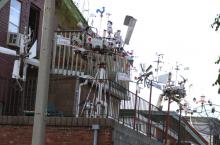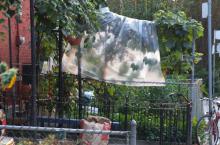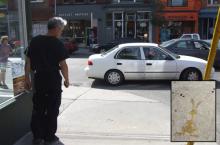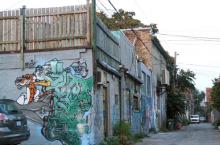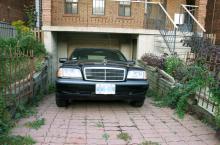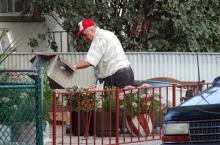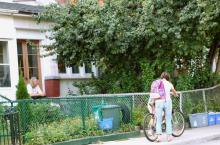In July 2006, neighbours of 105 Robinson Street, Toronto, call the authorities when they notice that their old neighbor doesn’t pull his garbage to the curb as he had done reliably for the last 40 years. The small house just off Queen Street West is opened, and the man who had suffered a stroke is saved.
Following the procedures of deciding his future and finding some next of kin, the “Municipal Archives” step in to assess the house and its contents. First, they encounter: stale air. Dim light filtering through layers of newsprint that obscure the windows. A sofa emerges, a phone, newspapers, books, medication, a TV, a radio, collections of aged photographs,.. . A narrow path through household clutter ends at an armchair before a wood stove. Beside it, a sectioned column transpierces the house, anchored in a kind of cellar-space and punctures the ceiling into the attic.
One is reminded of Constantin Brancusi’s “Endless Column”. And sculptures everywhere: emerging from the walls, stacked on racks and rising from pedestals everywhere, the small rooms are packed with a veritable pandemonium of amorphous, organic forms. Greyish layers of wax sculpt human and animal chimeras; one can identify rabbits, doll fragments, human figures in parts and studies. They fill the shelves, emerge from the walls, huddle in corners.
Who was the man who lived here? What caused him to transform his space in this obsessive, consuming manner? A derelict coffee-cup seems to have dried out just a moment ago. One brushes against hanging figures that block the passage, or squeezes past bulging coats in a claustrophobic hallway. Classical nudes co-habit with constructivist cylinders. Stacks of sketches adjoin splashed traces of vivid, physical labour. Many objects evoke an impression of art as the principal outlet for some unspeakable personal history.
Does Wagenbach's work display a lifetime of a kind of search for resolution, if not absolution?


